Written by: Anna Lappé
The satellite imagery is staggering: an Antarctic ice shelf roughly the size of New York City collapsing into the ocean. Its demise, captured and reported by NASA scientists in mid-March, was only the latest startling news from a region where temperatures have soared up to 40° Celsius (72° Fahrenheit) above average.
From melting ice sheets to tornadoes ravaging New Orleans and wildfires sweeping Texas, it’s ever clearer that the climate crisis is here, now. In its sixth major report since 1990, the Intergovernmental Panel on Climate Change (IPCC) conveyed the urgency: “The scientific evidence is unequivocal: climate change is a threat to human wellbeing and the health of the planet,” said IPCC Working Group II co-chair Hans-Otto Pörtner. “Any further delay in concerted global action will miss a brief and rapidly closing window to secure a livable future.”
Responsible for roughly one-third of the world’s carbon emissions, the global food system is one of the key places for transformative action. Among the 3,675 pages of Working Group II’s report on climate impacts, adaptations, and vulnerabilities, the authors — 270 of them from 67 countries — share evidence for strategies that can be adopted rapidly to reduce the food system’s climate impacts while strengthening resilience and improving health, food security, and the well-being of food producers.
One strategy the report highlights is agroecology. Defined in the report as a “holistic approach” to farming, agroecology as a practice includes techniques such as intercropping and planting cover crops, integrating livestock and trees into landscapes, and deploying organic farming methods to enhance biodiversity and soil health while eliminating dependence on external inputs like pesticides and synthetic fertilizer. It’s a nature-based solution that can “contribute to both climate mitigation and adaptation,” the IPCC stresses. It’s also a solution grounded in an embrace of the human rights of Indigenous and small-scale producers, as articulated in the 13 principles of agroecology from the United Nation’s High Level Panel of Experts on Food Security and Nutrition.
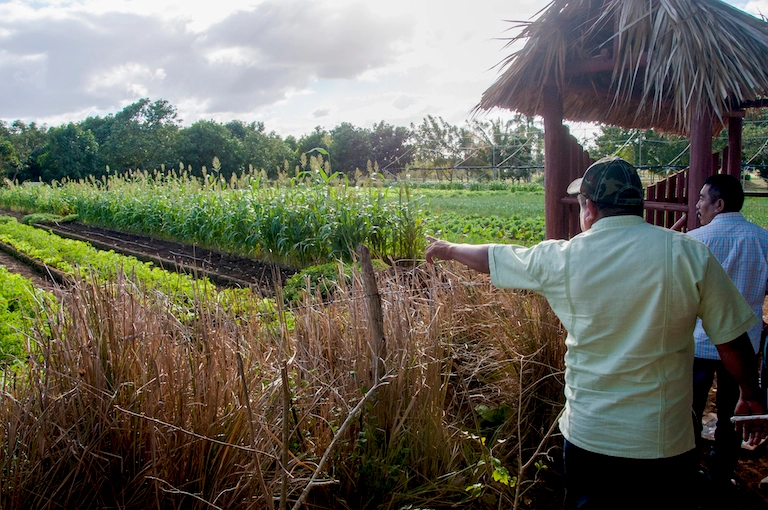
A science, a practice, and a movement
While its principles trace back millennia, agroecology’s roots in academia originate in the 1920s and 1930s as agronomists increasingly looked at how farming and ecosystems could be integrated. The term itself dates to Mexico in the late 1970s: It was there that a group of researchers were beginning to raise the alarm about a suite of relatively new agricultural practices being promoted there and in other key regions of the world. Dubbed the “Green Revolution” and underwritten initially by the Rockefeller Foundation, the approach centered on high-yielding hybrid seeds, whose vigor was only possible with annual seed purchases and massive investments in irrigation systems along with heavy use of fossil fuel-based fertilizers, herbicides, and other pesticides.
As Liz Carlisle, a professor at the University of California, Santa Barbara, describes in Healing Grounds: Climate, Justice, and the Deep Roots of Regenerative Farming, Mexican scientist Efraím Hernández Xolocotzi, Mexican plant pathologist Roberto García Espinosa, and Californian ecologist Steve Gliessman were documenting how agricultural practices long embraced by Indigenous Mayan farmers in Mesoamerica were producing high yields without the financial and ecological costs of Green Revolution methods. As they spent time in the field, the colleagues “came to believe that these farmers’ approaches were far more effective than the ones being promoted by their own institution,” Carlisle writes. They decided to develop a new academic program, one that would put these farmers’ voices “front and center.”
It was the summer of 1978 when they launched a master’s degree program at the Colegio Superior de Agricultura Tropical. The focus? What they called “agroecology.” From the beginning, they grounded the concept in wisdom from Indigenous communities and in the voices of farmers themselves. Echoes of this work reverberate in the IPCC report today, whose authors stress agroecology’s roots in Indigenous and local knowledge around the world.
Agroecology proponents are quick to underscore that the concept refers not simply to these agricultural practices and the academic field that has blossomed around them, but as Maywa Montenegro, an assistant professor in the Department of Environmental Studies at the University of California, Santa Cruz, told Mongabay, “The field of agroecology includes the academy, but very importantly is not limited to it. Agroecology is a science, practice, and a movement.”
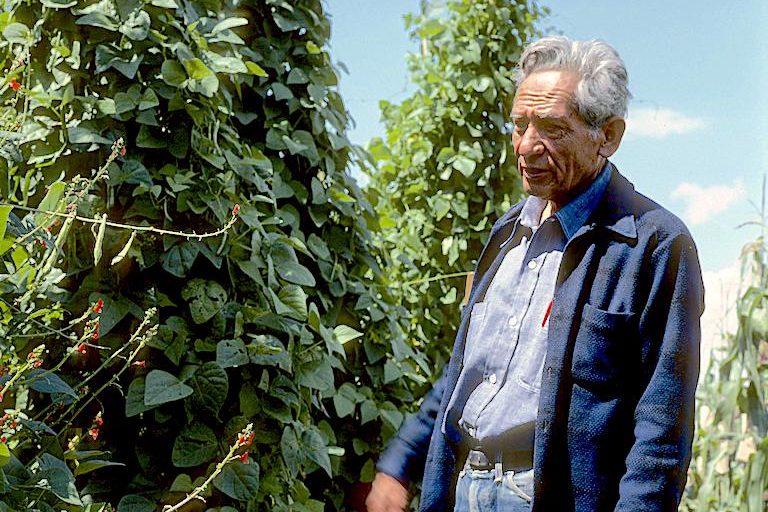
Shifting resources and local resilience
While the new IPCC report helps underscore just how much potential agroecology holds, the movement element of agroecology is critical because achieving the mitigation and adaptation potentials of agroecology will require major transformations in policy — and a substantial shift in public and private resources.
The report shows what benefits could accrue from such a shift, particularly for greater climate resilience. By building healthy soil, agroecological practices like agroforestry provide “buffers against drought,” note the IPCC authors, and “reduce soil erosion during storms.” Adopting agroforestry — integrating trees into farming landscapes — “shelters stock and crops in heat waves.” And agroecology, which emphasizes multi-cropping, leads to increased “resilience to disease and pests,” say the authors. With “high confidence,” they write, “adoption of agroecology principles and practices will be highly beneficial to maintaining healthy, productive food systems under climate change.”
Agroecology also significantly reduces food system emissions. In one study the IPCC cites, a European Union-wide shift toward agroecology would cut the region’s emissions by 47 percent compared with 2010 levels without affecting its food security. Another cited study echoed this finding, showing that these practices don’t just hold yields steady, but can actually increase them: Small-scale farmers adopting agroecological practices across Asia, Africa and Latin America on farms of 2 hectares (5 acres) or smaller saw their yields jump by 25 percent.

The resiliency benefits of agroecological practices in the face of the climate crisis have been well-documented. Perhaps nowhere has this mattered more than in the Philippines. Made up of more than 7,600 islands, the country’s geography has made it one of the most at risk from the climate crisis, but leaders in the agroecology movement there have seen the results of decades of work. Cris Panerio, the national coordinator of a food and farming NGO called MASIPAG at the forefront of that organizing, told Mongabay that their farmers have reported recovering faster after being hit by typhoons and floods — extreme weather events made worse by the climate crisis — compared with their conventional counterparts. They credit agroecological practices, including planting rice varieties their farmers have bred for adaptation to such conditions.
Through farmer-led and participatory rice-breeding projects, MASIPAG has collected and developed more than 2,000 rice varieties since 1985. “In contrast to the hybrid rice developed by IRRI [International Rice Research Institute] or PhilRice [Philippine Rice Research Institute],” Panerio explained, “seeds that need to be purchased year after year and require synthetic inputs to deliver high yields, MASIPAG varieties can be saved and shared among farmers, and flourish without pesticides or synthetic fertilizer.” Today, MASIPAG farmers are independent from the formal rice breeding sector, says Panerio, tapping their own seed banks and a central backup seed bank should they need it.
Panerio’s group fosters farmer-to-farmer learning, emphasizing rice and habitat diversity. In the rice fields of their members, Panerio describes fish ponds integrated with raised beds growing a variety of vegetables, and livestock incorporated onto farms. Native forest and fruit trees are also included whenever possible. “You can only imagine the biomass from such a farm system,” Panerio said, “with everything, except the food itself and firewood, turned into biofertilizers through composting or mulching.” All this adds up to a much smaller carbon footprint than that of a farm dependent on purchased seeds and fossil fuel-based pesticides and fertilizer.
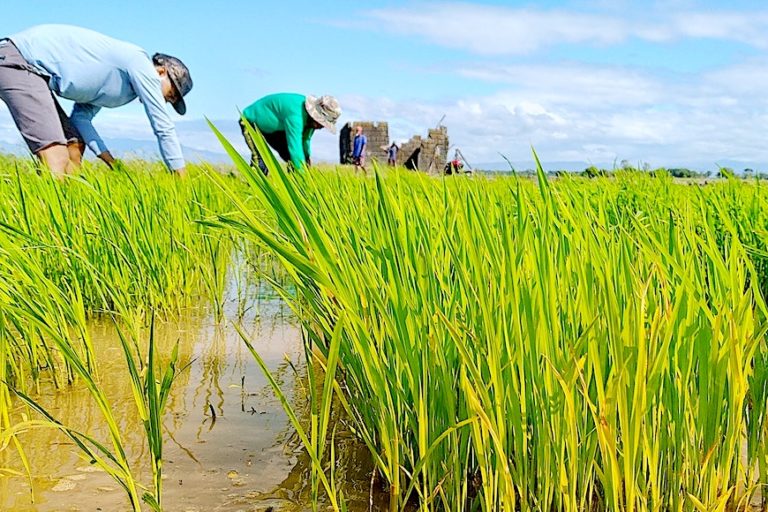
An ‘explicit’ climate solution
The benefits of such agroecological approaches led the authors of this IPCC report to emphasize their feasibility and effectiveness as a climate solution. As Cornell University professor Rachel Bezner Kerr, a coordinating lead author on the chapter on food, fiber and ecosystem products, told Mongabay, previous IPCC reports have mentioned agroecology, “but this report is highlighting the emerging and increased evidence around agroecology as an adaptation and mitigation solution.” Indeed, agroecology is mentioned throughout the report, including in the chapter on health and, importantly, Bezner Kerr notes, it’s included in the Summary Report for Policymakers. For Bezner Kerr, this is a sign of the “deeper understanding of humanity’s dependence on biodiversity and healthy ecosystems. Agroecology is one of those strategies that links people to nature in a very explicit way.”
It’s this dependency Bezner Kerr has been documenting through decades of research in partnership with farming communities, particularly in Malawi where she’s been conducting fieldwork in partnership with a local nonprofit as part of a 22-year-long research collaboration. When reached by Skype, Bezner Kerr described the work there, partnering with farmers to document food security, nutrition and biodiversity on the landscapes where farmers have adopted agroecology approaches. Bezner Kerr emphasized that this is exactly the kind of participatory learning the report lauds: “The report emphasizes the evidence that inclusive adaptation strategies are essential, and agroecology is one of those approaches that emphasizes co-knowledge production, participatory and inclusive methods. It’s not just about adding compost to soil, it’s much more than that.”
For agroecology critics, a common charge is that it cannot scale, but Bezner Kerr argues it’s quite the opposite: agroecology “lends itself to scaling out because it relies on farmer-to-farmer methodologies, local knowledge, available resources, and adaptation to local context.” Indeed, many agroecological efforts around the world operate across significant landscape scales: Panerio’s organization in the Philippines includes a network of hundreds of organizations reaching 30,000 farmers directly, and roughly three times as many through those farmers’ relationships. In another example, community managed natural farming efforts in Andhra Pradesh, India, now include 700,000 farmer participants. Globally, La Via Campesina, which was founded in the mid-1990s, now represents more than 300 million smallholder farmers, pastoralists, fisherfolks, Indigenous peoples, agricultural and food workers, landless peoples, women, youth, consumers, urban food-insecure people, and NGOs.
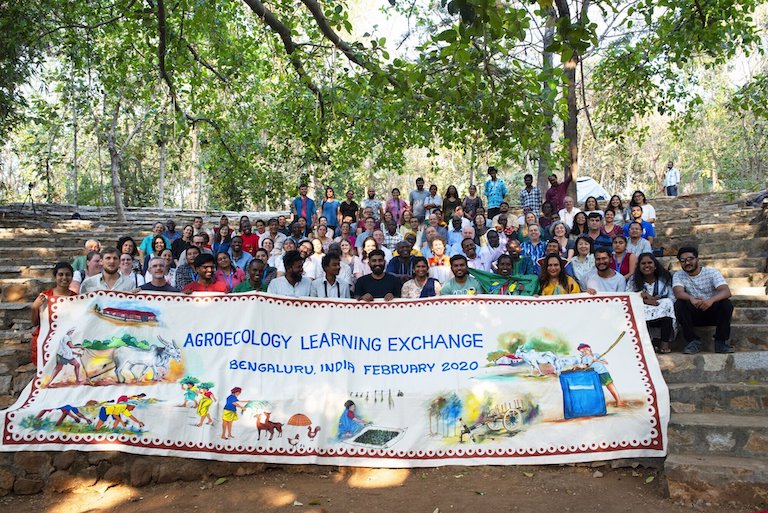
In his 1981 book The Gift of Good Land, U.S. farmer and poet Wendell Berry urged us to address our thorniest crises by “solving for pattern.” A poetic phrase for systems thinking, solving for pattern is a call for solutions that create a cascade of co-benefits. Agroecology is just such a solution. For those farmers in the Philippines, it has meant resilience in the face of extreme climate shocks while producing nourishing food for their own communities and achieving independence from expensive inputs. For the farmers Bezner Kerr is working with in Malawi, it means agricultural approaches that boost local biodiversity, not diminish it.
The counterpoint — what my mother Frances Moore Lappé and I called “solving by dissection” in our book Hope’s Edge — is the tactic of applying a technical fix to a discrete aspect of a crisis, without considering the whole and triggering a cascade of consequences. As Berry wrote, such a “solution” is dangerous “because it acts destructively upon the larger patterns in which it is contained. It acts destructively upon those patterns … because it is formed in ignorance or disregard of them.”
For years, the IPCC has warned against “solve by dissection” responses to the climate crisis, and in this latest report the authors underscore the concern even more clearly. As Maarten van Aalst, a contributing lead author, noted: “We have explicitly added the notion that responses to climate change can generate significant risks of their own: maladaptation inadvertently creating or aggravating risks.”
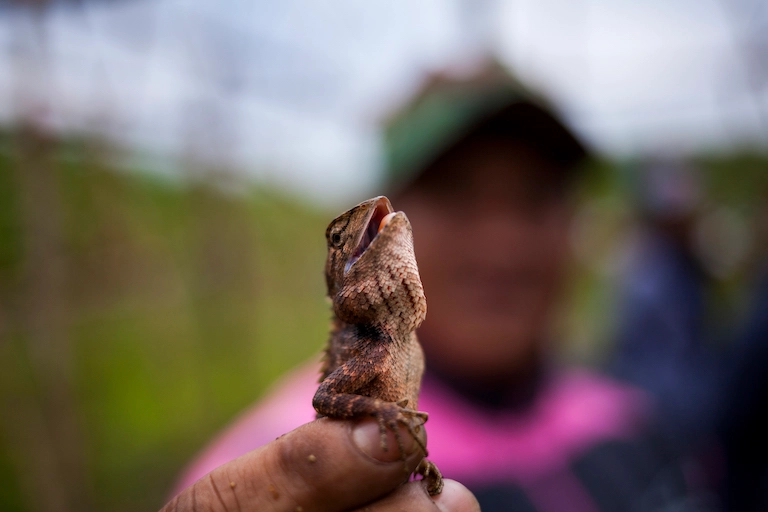
For Bezner Kerr, a food system maladaptation would be the rush to respond to droughts by promoting irrigation, for example. “In the short term, irrigation can reduce climate risks for producers and consumers,” she said, “but if done in an area with limited groundwater and with capital-intensive irrigation, it can lead to groundwater depletion, salinization, and worsening inequalities and debt loads for small-scale producers.” In contrast, agroecology can help farmers thrive in drought conditions by using seeds bred for drought tolerance, building soil organic matter so the land can retain more water, or using swales and other techniques to capture rainfall — all of which are good for the ecosystem and for the farmer.
Panerio sees maladaptation in the promotion of glyphosate-based herbicides like Roundup to reduce plowing and thus soil carbon loss. While glyphosate can reduce the need to till for weed control, Panerio has seen the consequences of widespread use of this herbicide: Setting aside its health risks which are now widely known, the introduction of genetically engineered corn and other crops resistant to glyphosate — the two are marketed together heavily — traps farmers in debt. “Corn farmers get their inputs from traders, the same people who buy the farmers’ corn,” Panerio said. “In the end, the traders profit two ways: One from the sale of inputs (engineered corn seeds, pesticides, and fertilizer) and the other for the low price of the corn.”
He also sees the ecosystem impacts: the widespread use of glyphosate causes soil erosion year-round. “In the dry season, areas sprayed with glyphosate have no vegetation and are devastated by wind erosion,” Panerio said. “In the wet seasons, the topsoil is washed away by rain after the corn is harvested.”

Mounting evidence and growing momentum
For agroecology advocates, its multiple benefits are its superpower. As this latest IPCC report documents, evidence of these benefits continues to mount. Other recent studies have pulled together evidence from the field, including “The Politics of Knowledge” from the Global Alliance for the Future of Food, which emphasizes how small farmers and Indigenous peoples are co-creators and scientists in demonstrating agroecology’s impact. (Disclosure: The foundation where the writer works is a member of the network.)
Worldwide, the momentum for agroecology is growing, within the academy and beyond. Since the first academic agroecology program launched in 1978, the field has exploded. There are now dozens of agroecology schools and programs around the world. UCSC’s Montenegro notes the Sustainable Agriculture Education Association’s growing list of degree-granting programs in agroecology as well as applied student farm programs, where students learn experientially. Her own university has had a long-standing, esteemed agroecology program and recently launched a new agroecology major. Even in the United States, where the vast majority of agricultural land goes to high-input commodity production, and half of all corn is diverted to ethanol, there is “palpable excitement about the resurgent interest in agroecology,” Montenegro said.
The movement beyond the walls of the academy is growing, too. Its advocates know, however, that for agroecology to really take hold, it will require a significant transformation of how agriculture is financed and incentivized, and where research dollars go. Today, relatively little public and private funding is geared to these approaches. One study found that among European donors, less than 15 percent of agricultural budgets were directed toward agroecological approaches. Among philanthropies focused on climate solutions, food systems funding has historically been a tiny fraction — with agroecology representing even less. That is changing, too, with efforts like the Agroecology Fund and other networks within philanthropy promoting agroecological solutions.
“Given the very limited investment in agroecological research and implementation to date,” Bezner Kerr said, “the fact that there is such evidence points to even greater potential should it be given more investment and attention by governments and other groups interested in adaptation and mitigation solutions.” This is one of the reasons why it’s important, advocates stress, that agroecology be considered holistically: it’s not just what happens on the farm, it’s the social movements needed to move policy and shift power into the hands of farmers themselves.
Nearly half a century ago, when those researchers sought a way to describe the practices they were documenting in the fields of Indigenous farmers in rural Mexico, the term agroecology resonated. Today, it’s a concept that provides a pathway for tapping long-held local wisdom to address one of the world’s most pressing crises.

This story originally appeared in Mongabay and is part of Covering Climate Now, a global journalism collaboration strengthening coverage of the climate story.






